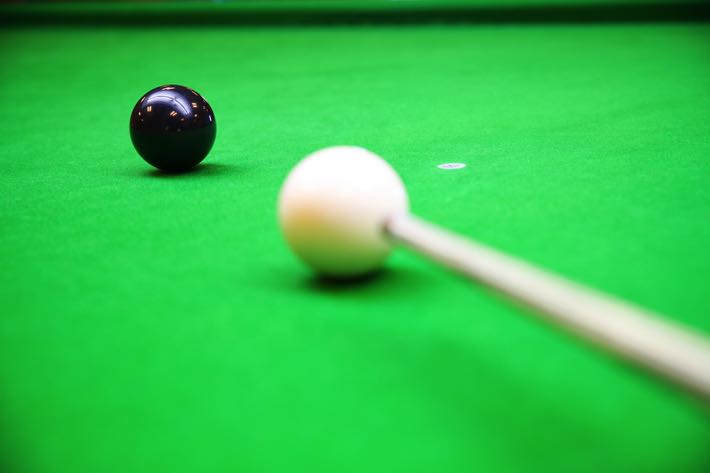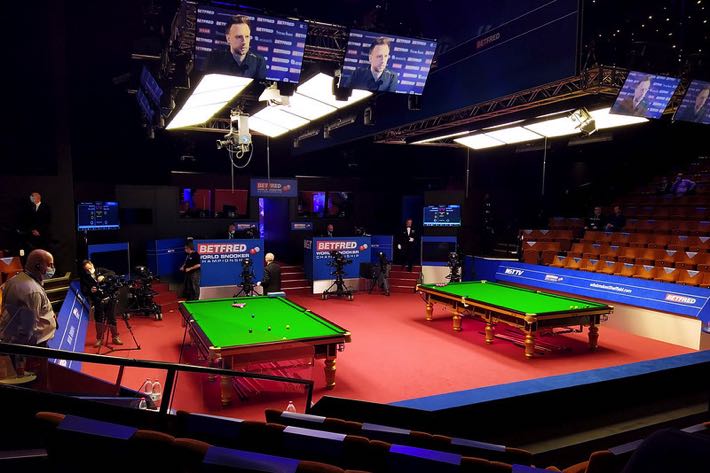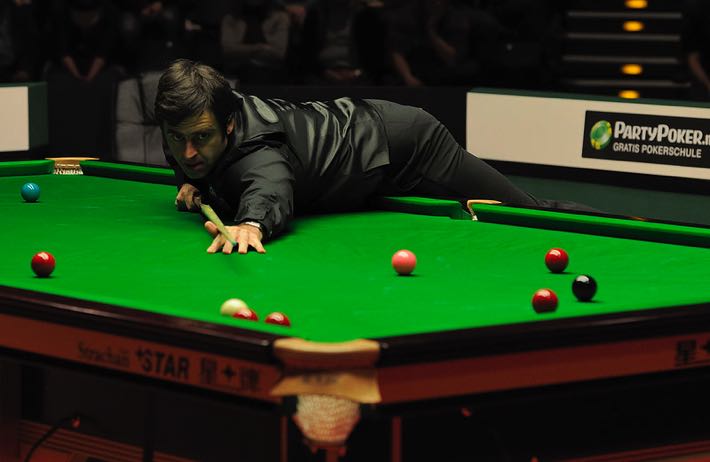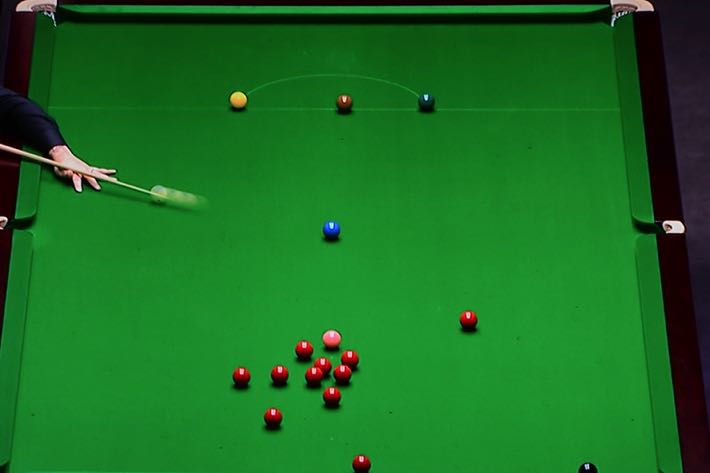 Let’s be honest, when it comes to sports betting snooker might not be the first choice that springs to mind. However, even though it’s hay days of the 80’s and 90’s seem to be someway off these days, the sport actually does a thriving trade with a lot of bookmakers, many of whom actually sponsor events around the world.
Let’s be honest, when it comes to sports betting snooker might not be the first choice that springs to mind. However, even though it’s hay days of the 80’s and 90’s seem to be someway off these days, the sport actually does a thriving trade with a lot of bookmakers, many of whom actually sponsor events around the world.
It’s important to understand that comparing the number of markets on offer to something like football is going to pointless as its going to contain so many less. Throughout this article we will be comparing the depth each bookmaker goes into for the sport with other snooker sections.
Honestly, we aren’t really expecting the world from the bookmakers but we are looking for them to provide as comprehensive a marketplace for the sport as possible. It’s still a sport that is often shown around the world and its recent boom in Asia has given the sport a new lease of life. The number of bookmakers that cover the sport is still extremely vast, so we think that the 5 bookmakers below should be able to provide something for the majority of bettors looking to wager on snooker.
- In This Article:
- Bookmakers
- How to Bet
- Betting Markets
- Betting Rules
- Tournaments
Best Snooker Betting Sites
#1 – Coral
Coral have made it to the top of the charts, mainly because of their inclusion of the sport on their live streaming channel. The types of events generally range from some of the lesser competitions around the world to some of the higher profile ones. We were actually pleased when we saw the sport on their live streaming channel – which seems to be growing by the week – as this generally indicates the bookmaker takes the sport pretty seriously and are keen to post up a number of markets to bet on.
The snooker HUB on site is one of the reasons why it actually got voted as our number one pick. Not only is the standardly beautifully designed Coral look, but it includes a bit of betting highlight information talking through potential markets that are happening or upcoming. It’s only about a paragraph or so but it’s always interesting and to us, keeps these sorts of things fresh with a keen eye on providing value to the user. Something a lot of bookmakers fail to do, especially for snooker!
Finally we want to mention about how well the books are run for snooker with Coral. They are always ultra competitive when it comes to industry standard and we can easily see why a lot of snooker enthusiasts use Coral as their one (and sometimes only) port of call.
#2 – Betfred
If you’ve read any of our previous reviews about Betfred then you may know that we aren’t massive fans of their drop-down menu in the side bar. The lack of HUB pages for sports we think really detracts from being able to see exactly what’s going on for that sport in the bookmaker. But, we are going to put that to one side for this as we think they generally do a reasonably good job with snooker.
What you will find is good coverage of a lot of the bigger tournaments that run around the world. If you are looking for slightly more niche outputs then you may need to look elsewhere. The inclusion of a lot of these matches on the Betfred radio output is something that we enjoyed, but in all serious, listening to snooker commentary on the radio does get a little tedious, even for the more dedicated of fans.
The site overall was a little bit thin on the ground when it comes to betting on snooker. We’ve mentioned this previously, but Betfred are so geared up towards football betting that it feels like other sports – snooker included- seem to get left behind. Whilst coverage isn’t terrible, if you looked to see how they go about promoting football, then you will be aware of what they are capable of and truthfully, the snooker section isn’t up to scratch.
#3 – BetVictor
There are very few sports that BetVictor don’t cover exceptionally well, and whilst snooker won’t compare with some of their bigger hitting sports, they probably cover the sport about as well as anyone.
To start with they include a large number of competitions from around the world. We mentioned at the start of this article how the sport had gone massive in Asia and this seems to be an area in which BetVictor have picked up on this. I cant say that every tournament in Asia is covered – there are an awful lot now – but the ones that are there certainly pad out what otherwise could be quite thin pickings for snooker lovers.
We liked the way that the BetVictor snooker page allowed you to pick certain matches to add to your selections. When there are larger tournaments in action its often nice to condense what could be a long list to just a few that you are looking to bet on. Once you’ve done this you can quickly view these matches, albeit the outright winner of each match. Don’t’ forget, BetVictor run pretty much everyone of their markets live in a section that we think works extremely well.
#4 – Ladbrokes
Ladbrokes will provide you with a reasonably strong betting choice for snooker. Similarly to a lot of bookmakers, they don’t actually cover the sport in all that great a detail. They will give you markets on the major tournament as well as some from outside the majors, but in terms of depth, it’s pretty poor.
f you are a casual snooker bettor and already have a Ladbrokes account then they will provide some market coverage. If you are looking to really dive into several tournaments and matches each week, then there are better alternatives which can, of course, be found above.
How to Bet on Snooker

The first thing you will need to do is create an account at a bookmaker of your choice. We have included which we think will be the best in the industry above, but essentially it’s down to you to decide which will be best for you. What we will say is that the top three bookmakers are head and shoulders above Ladbrokes in terms of overall betting experience.
The range of games taking place with snooker does limit the sport somewhat. That being said, when there are tournaments taking place there are a number of sites out there that will include betting information in which to make a more detailed decision. Whilst a lot of bookmakers offer these types of services for other sports, it’s likely that you will need to visit outside sources to find information on snooker and in turn, find more profitable bets.
Betting Markets
As with most sports, the most popular market when it comes to betting on snooker is that of the outright winner. This will allow you to bet on which player you think will win the match. It’s worth noting that the majority of games will be in a knockout format where one player must progress. The player progresses will be deemed the winner. There are some tournaments such as the Premier League where draws can be had, meaning that the draw market will be available for betting selection in these games.
Spread Betting
In more recent times, spread betting has become very popular in the snooker world. A variation of that is the handicap spread where you bet on a certain player to win with a handicap of either plus or minus frames before that game starts. An example would be that you backed a player to win with a handicap of minus 2 frames to start with. This would means that to win the handicap you need them to win by three or more frames. A push is often given out on games that end as a tie with the handicap in place and you will lose should they fail to win by 2 or more frames.
The spread is also widely used in the matches highest break market. This will mean that you bet on a bracket of numbers and choose whether you think the highest break in the match will be more or less than that number. Let’s say the bracket was 85-90 and you backed higher. If there is a higher break then you will win your spread bet, whereas is the highest break was 84 or less, then you would lose. Should the break land between 85-90 (inclusive of both 85 and 90) then your bet would be a push.
Snooker Bets
- Win Only – This market is the most common and probably simplest market; choose which player you think will win the match overall.
- First Legal Colour Potted – The first legal colour potted market means you bet on which colour – excluding red – gets potted first in a frame. As the game starts this market will often turn live meaning you can bet on each frame. This can also be adapted into next colour potted for live betting purposes.
- Total Match Centuries – This is often a line set by the bookmaker and you can then take the over or under on this line.
- Specific Frame Breaks – Each frame will allow you to choose whether either player will score a century or even a 50 in that frame. It’s a simple yes or no that’s needed for this market.
- Frame Score – You can select the exact score for the match on this market in terms of winning player then number of frames.
- To Win First Frame – Simply choose which player you think will win the first frame. The break off is important with this as the player breaking will usually hold a slight advantage.
- Highest Break – Again relatively straightforward, choose which player will have the highest break in the game. If the breaks are ties then the market will be void and your stake will be returned.
- Frame Breaks – Specific frame breaks allows you to choose which frames will yield a certain break amount. It’s similar to spread betting except these sorts of markets generally require you to choose between over 50 or over 100.
Snooker Betting Rules

Snooker rules, for the most part at least, are pretty self-explanatory. The main one that will get used in this form of betting is in the event of an opponent withdrawing prior to or whilst a game is taking place. Basically if an opponent does withdraw then the player progressing to the next round will be determined the winner. Live betting bets that have already been settled will remain settled, but bets that were waiting on the progression of the game will become void.
Re-racks are something that happen rarely in frame but are a nightmare for punters. If a frame has to be re-racked and started again then settled bets will remain such as first colour potted but outcomes needing the conclusion of that frame will become void and your money returned.
Rule Highlights
- Withdrawing Mid-Game – In the event of one player withdrawing mid game then the player progressing to the next round will be deemed the winner. Any bets settled prior to the withdrawal will stand and bets not settled will become void and stakes will be returned.
- Re-Racking – In the event that a frame has to be re-racked then all bets on the opening frame will become void, except for the first colour potted where that will remain providing a colour has been potted.
- One Shot – Players must play one shot in the tournament for bets to stand on the stage of elimination betting markets.
Major Snooker Tournaments

If you’re going to place a bet on snooker then the best events to place them on are the sport’s major tournaments. Every year, the Crucible in Sheffield plays host to World Championship, making an exception to the exceptional theatre that is normally done there. That is one of three big events, joined by the UK Championship and the Masters as what is known as the Triple Crown of snooker. At the time of writing, just 11 players in the modern era have won it. Here is a look at those big tournaments of snooker:
The World Championship

Snooker’s longest-running tournament, the World Championship began life in 1927 and has gone on to become the sport’s most prestigious event. As part of that, it is also the wealthiest, boasting total prize money just short of £2.4 million when the competition took place in 2022. Of that, £500,000 went to Ronnie O’Sullivan, the eventual champion. The tournament was originally known as the Professional Snooker Championship, which was a suitable name considering it was the first snooker tournament contested by professional players. Since then, it has gone on to become the sport’s premier competition.
How It Started
In England, snooker had all been about the English Amateur Championship, which first began in 1916. It grew to become the leading tournament in the sport for amateur players, but professionals soon began to feel as though they wanted a competition of their own, leading to the creation of the World Championship in 1927. Of the players that entered it in its first year, ten were professionals, including those that were the leading players in the more established sport of billiards. Initially, matches were played over 15 frames, increasing to 23 for the semi-finals and 31 for the final.
The first match was between Melbourne Inman and Tom Newman, taking place at Thurston’s Hall in London’s Leicester Square. The snooker wasn’t actually the main event, instead being played in addition to a billiards match that took place over a fortnight. One frame of snooker was played at the end of each billiards session. The final of the inaugural World Championship began in early May and took place at Birmingham’s Camkin’s Hall, lasting for four days. Joe Davies went up against Tom Dennis, winning 20-11.
the following year, the competition was played as a challenge tournament, with Davis going straight to the final and other entrants playing one another for the right to go up against him. This was dropped in 1929, but the competition struggled to gain traction and just three people entered to play in the tournament in 1932. 1935 brought about some big changes, including the addition of the word ‘World’ to its title. Other changes included the way it was structured, with matches taking place consecutively at the same venue for the first time, which was Thurston’s Hall in London.
Different Formats Over the Years
The World Snooker Championship enjoyed numerous different changes in the post-war years. In 1952, for example, a dispute between the Professional Billiards Players’ Association and the Billiards Association and Control Council meant that PBPA members boycotted that year’s tournament. The BACC wanted it to be a competition about honour, with financial considerations being secondary. This meant that there were only two entrants that year: Horace Lindrum and Clark McConachy. Lindrum won, scoring 73 frames to McConachy’s 37 on the 10th day of playing.
The PBPA established its own tournament, which attracted ten entrants, but the Championship was revived on a challenge basis in 1964. Five years later and it reverted to being a knockout tournament, which is the moment that is considered by many to be the start of the modern era of the World Championship. Eight professionals from the 1950s cohort entered, as did eight new pros, looking to make their mark. Two of the newer players met in the final, with John Spencer defeating Gary Owen 37 to 24, with the final being played at Victoria Halls in London.
The Championship took place in Australia in 1970 and when Alex Higgins won the 1972 Championship, he became the youngest player to do so at 22 years and 345 days old. One of the biggest changes came in 1973 when it was played over two weeks in one venue rather than over a long period of time in different places. This formed the basis of how the competition would be run from then on, albeit with different length matches played depending on numerous different factors. Equally, in 1976 it was played at two venues, one in Middlesbrough and one in Manchester.
The Crucible as the Competition’s Home

There were a number of issues with the tournament in 1976, with the main one being the quality of the tables that were used. In 1977 the decision was taken to move the competition to the Crucible Theatre in Sheffield, where it would remain from then on. There were 16 competitors that year, thanks to eight seeded players and eight challengers. It was eventually won by old-hand John Spencer, with a much more interesting story taking place in 1979 thanks to the victory of Terry Griffiths, who had only turned professional seven months before.
The competition has seen some phenomenal snooker players winning it over they ears, including a period of domination by Steve Davis during the 1980s and a similar period of dominance for Stephen Hendry in the 1990s. Ronnie O’Sullivan has been one of the most successful snooker players ever in more recent times, winning it seven times between 2001 and 2022. Indeed, his 2022 victory led to him becoming the competition’s oldest world champion, as well as winning more times at the Crucible than Hendry and also equalling his record for world titles during the modern era, with seven apiece.
The Format
The finals of the World Championship see 32 players take each other on in knockout format. Of those 32 players, 16 make it to the finals automatically and the other 16 need to qualify to be there. Players are seeded according to the world rankings, with the length of matches being different depending on the round that they’re played in. At the time of writing, the length of matches is as follows:
- 1st Round: Best of 19 Frames Over 2 Sessions
- 2nd Round: Best of 25 Frames Over 3 Sessions
- Quarter-Finals: Best of 25 Frames Over 3 Sessions
- Semi-Finals: Best of 33 Frames Over 4 Sessions
- Final: Best of 35 Frames Over 4 Sessions
The qualifying system has seen numerous changes implemented over the years, such as in 2015 when all living former world champions were given a chance to play in the qualifiers and all non-seeded players had to start in the first of the three qualifying rounds. In 2020, another change saw no seeding used for the qualifying round, whilst the overall championship was open to 144 players instead of the previous 128.
The UK Championship

If the likes of the Brexit has taught us anything, it is that many British people have a sense of superiority that outweighs all else. Perhaps that is why a decision was taken to launch the UK Championship in 1977, with the Tower Circus in Blackpool playing host to the competition. Back then it was the United Kingdom Professional Snooker Championship and was only open to British resents and those with British passports, with Patsy Fagan winning the inaugural tournament thanks to a 12-9 defeat of Doug Mountjoy.
The Early Years
In 1978, the tournament moved to the Guild Hall in Preston, staying there for nearly two decades. During that time, the rules changed in order to grant it ranking status, with all professionals allowed to enter since 1984. It carried more ranking points than any tournament other than the World Championship, which gives you a sense of how well-respected it is within the sport. Eventually, it was overtaken by both the International Championship and China Open, largely thanks to the prize money that those two competitions offer.
There have been some genuinely thrilling finals of the competition, such as the 1985 final when Willie Thorne led Steve Davis 13-8 at the start of the evening session but went on to lose 16-14. It was seen by many as being a turning point in the sport, with Davis regaining confidence after a World Championship loss but Thorne never winning another ranking title. In 1989, Stephen Hendry won the competition, signalling what was to come in the following decade, when he won every major trophy that there was to win in the sport of snooker.
The Modern Era
In 1993, the decision was taken to change the format of the final, reducing it from the best of 31 frames to the best of 19. This is the format that has been used ever since for the final. That was also the year that Ronnie O’Sullivan won it for the first time, becoming the youngest ever winner not only of this competition but any ranking tournament. In 2001, O’Sullivan also delivered the biggest winning margin that the tournament has seen, defeating Ken Doherty 10-1. Three years later and Stephen Maguire bear David Gray by the same score.
In 2011, the competition returned to the Barbican in York where it had been played some years before, with some radical changes to the format. All matches up to and including the quarter-finals became best of 11 frames instead of the best of 17 that they had been before. Other format changes have happened since, such as in 2014 when every round up to and including the semi-finals were over 11 frames, with the format continuing today. In spite of a sense of British superiority, the 2015 final was competed between Australia’s Neil Robertson and China’s Liang Wenbo.
The Masters

There are a huge number of snooker tournaments that we could tell you about, but we’ll round this off by looking at the Masters, which completes the Triple Crown of snooker. It is an invitational tournament, that is actually older than the UK Championship, having begun life in 1975. It is not a ranking event, but it is still considered to be one of the most prestigious events on the snooker tour. To give you a sense of where it comes in relation to other tournaments, the total prize fund for 2022 was £725,000.
The First Years
Held for the first time at the West Centre Hotel in London in 1975, ten of the leading players were invited to take part. It was sponsored by Benson & Hedges, the cigarette company, with John Spencer winning it in its first year. It was played in numerous different venues during the opening years, including the New London Theatre and the Wembley Conference Centre. The number of players invited increased to 12 in 1981 and then 16 two years later. From 1984 onwards, the world’s top 16 players according to the world rankings were invited to take part.
This was remained at 16 in 1990, with two players receiving wild card invites chosen at the discretion of the game’s governing body. These players went up against those ranked 15th and 16th in qualifying matches. In 1997, Steve Davis was up against Ronnie O’Sullivan and won six frames in a row to come back from 4-8 down to win the match after it had been disrupted by a streaker. The following year, the match ended up needing to be decided according to a re-spotted black, with Mark Williams defeating Stephen Hendry.
The Format
The format of the Masters has remained largely the same since 1984, with the world’s best 16 players taking part in it. The wild card aspect was stopped in 2010. The defending champion of the Masters always takes the top rank, with the World Championship winning ranked at number two. The remaining places are then allocated according to world rankings, seeded accordingly. Given the fact that the defending Masters champion and the World Championship winner are usually in the top 16, the other 16 players tend to be made up of the rest of the top 16 in the world rankings.
There have been some exceptions to this over the years, such as when Ronnie O’Sullivan chose not to enter as the world number three in 2020, so the world number 17, Ali Carter, replaced him. Since 1996, the last 16 and quarter-finals have been the best of 11 frames, an extension from nine frames before then, whilst the final was moved from 17 framed to 19.